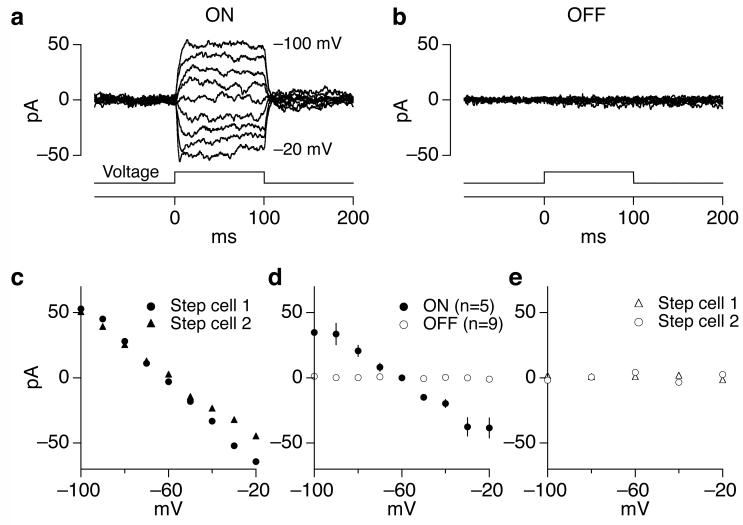Figure 5.
ON but not OFF cells are effectively reciprocally coupled. (a, b) Coupling currents produced in an ON (a) or OFF (b) parasol cell by stepping the voltage of a neighboring ON or OFF cell. Voltage steps ranged from -100 to -20 mV in 10 (a) or 20 (b) mV increments. Holding potential of both cells was -60 mV. (c) Steady-state current measured during the second half of the step plotted against step voltage. Circles plot data from a, and triangles plot data when the coupling was measured in the opposite direction (i.e. when the voltage step was applied to the other cell). (d) Collected measurements of current-voltage relations for reciprocal connections. The rectification at large voltage differences likely was due to uncompensated series resistance, which would cause the actual voltage difference to be smaller than expected. The effective coupling resistance between ON parasol cells (the inverse of the slope of the current-voltage relation) was 880 ± 80 MOhm. The effective coupling resistance between OFF parasol pairs (resistance > 100 GOhm) was at least 100 times higher. (e) Current-voltage relation for OFF parasol pair from b. Activity of receptors mediating chemical synaptic transmission was suppressed with 10 μM NBQX, 20 μM APV and 10 μM strychnine.

